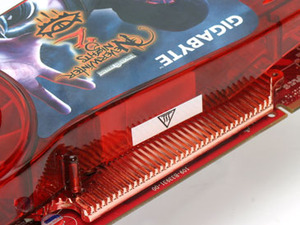Test Setup:
As always, we did our best to deliver a clean set of benchmarks, with each test repeated three times and an average of those results is what we're reporting here. In the rare case where performance is inconsistent, we continued repeating the test until we got three results that were consistent.ATI Test System:
- ATI Radeon HD 3870 512MB -- operating at 775/2250MHz using Catalyst 7.11 beta (8-43-1-1-071113a-55589E Crysis hotfix)
- ATI Radeon HD 3870 512MB CrossFire -- operating at 775/2250MHz using Catalyst 7.11 beta (8-43-1-1-071113a-55589E Crysis hotfix)
- ATI Radeon HD 2900 XT 512MB -- operating at 742/1650MHz using Catalyst 7.10 WHQL & Crysis hotfix for Crysis
- ATI Radeon HD 2900 XT 512MB CrossFire -- operating at 742/1650MHz using Catalyst 7.10 WHQL & Crysis hotfix for Crysis
- ATI Radeon HD 2900 Pro 512MB -- operating at 600/1600MHz using Catalyst 7.10 WHQL & Crysis hotfix for Crysis


Nvidia Test System:
- Nvidia GeForce 8800 GT 512MB -- operating at 600/1500/1800MHz using Forceware 169.09
- Nvidia GeForce 8800 GT 512MB SLI -- operating at 600/1500/1800MHz using Forceware 169.09
- Nvidia GeForce 8800 GTX 768MB -- operating at 575/1350/1800MHz using Forceware 169.09
- Nvidia GeForce 8800 GTX 768MB SLI -- operating at 575/1350/1800MHz using Forceware 169.09
- Nvidia GeForce 8800 GTS 640MB -- operating at 513/1200/1600MHz using Forceware 169.09
- Nvidia GeForce 8800 GTS 640MB SLI -- operating at 513/1200/1600MHz using Forceware 169.09
- Nvidia GeForce 8800 GTS 320MB -- operating at 513/1200/1600MHz using Forceware 169.09
- Nvidia GeForce 8800 GTS 320MB SLI -- operating at 513/1200/1600MHz using Forceware 169.09
Games Tested:
We used the following versions of the games listed to evaluate the performance of these video cards:- Crysis, version 1.1.1.5767 with DirectX 10 and DirectX 9.0
- World in Conflict, version 1.002 with DirectX 10
- BioShock, version 1.0 with DirectX 10
- Enemy Territory: Quake Wars, version 1.1.0
- Company of Heroes: Opposing Fronts, version 2.1.0.3 with DirectX 10
- Lost Planet: Extreme Condition, version 1.004 with DirectX 10
A note about games we would have liked to include:
Unfortunately, due to a Steam update, our Team Fortress 2 testing had to be canned and after this and the shenanigans we had with Half-Life 2: Episode Two during our GeForce 8800 GT 512MB review, we probably won't be using those titles for testing in the future, as the burden on time when one just keeps throwing away literally hundreds of results is impossible to manage.Call of Juarez on the other hand, we couldn't get to run on either of our test systems. This was thanks to the incredibly invasive StarForce copy protection found on the disc. We have a box of around 200 copies of the OEM version of the game in the bit-tech offices and we couldn't for the life of us get the game running - we were constantly greeted with "incorrect disc" errors, even despite changing DVD drives three times.
Hopefully in the future, we'll get a DRM-free version of Call of Juarez that we can install on our systems without issues. Invasive copy protection methods like this get in the way of legitimate users attempting to play the game they've purchased legally - the fact I've got around 200 legal copies of the game and couldn't get it running was quite simply laughable.

MSI MPG Velox 100R Chassis Review
October 14 2021 | 15:04









Want to comment? Please log in.